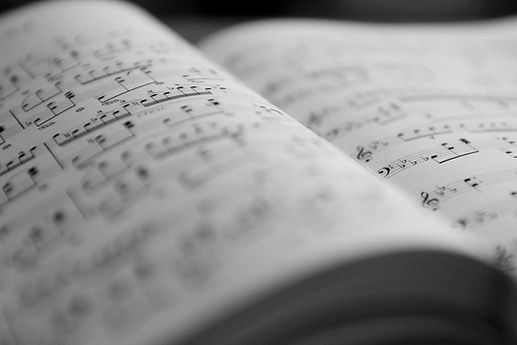
Presentations & Workshops
All presentations & workshops can be customized in length.
The Pedagogical Works of Miriam Hyde

Miriam Hyde (1913-2005) is one of the most well-known Australian composers. Her association with the Australian Music Examinations Board made her a household name, as students across the continent prepare her compositions annually. Despite the following she amassed in her home country, Hyde’s works are rarely played abroad. This is due in part to the era in which she composed - a time when conventional gender roles dictated that married women would stay close to home and devote much of their energy to raising a family. While Hyde’s larger works slowly gain traction abroad, her pedagogical compositions remain largely unknown. These works, many of which are compiled in five volumes of a graded piano series, are delightful microcosms of Hyde’s style, shaped by her love of travel and poetry. Hyde was trained foremost as a pianist and her compositions progress naturally from the classical piano canon. Despite her modest upbringing, Hyde was afforded the opportunity to witness performances by legends including Rachmaninoff, Paderewski, Prokofiev, Rubinstein, and Grainger, to name a few, as they made their rounds through the continent. These encounters with living history, combined with her passion as a teacher, allowed for an outpouring of pedagogical works of the highest caliber. Previously inaccessible outside of Australia, these works have become easily and inexpensively available online through Wirripang publishing in recent years. This session will highlight compositions suitable for study by beginning, intermediate, and early advanced pianists. Handouts with a listing of pieces in order of difficulty will be provided.
Presentation History
February 2024 - West Texas A&M University Piano Teachers' Workshop
January 2024 - San Antonio Music Teachers Association Meeting
March 2023 - Music Teachers National Association National Conference (Poster Session)
March 2023 - College Music Society South Central Regional Conference
September 2022 - Louisiana Music Teachers Association State Conference
Say This, Not That! Appealing to the Senses Through Metaphoric and Descriptive Language

In modern culture, our preference for direct and brief speech is replacing the old-fashioned art of metaphoric/descriptive language. Nowhere is this more of a tragedy than in music instruction. Given the fact that we all learn by association, that is, by relating new concepts to well-understood ones, it is imperative for us as teachers to facilitate this associative learning style through the use of creative metaphor and imagery. Piano teachers can utilize descriptive speech that appeals to each of the senses to convey musical concepts of shaping, pedaling, tonal projection, and dynamic execution to students of all ages and levels. A look back in music history reveals expressions and metaphors preferred by famous composers and pedagogues. Expressions from other cultures may also provide inspiration for fresh descriptive ideas. This session encourages pedagogues to occasionally consider swapping out their technical descriptions of musical concepts by “saying this, not that!” Through musical examples and audience participation, teachers will experience ways of teaching common concepts that appeal to all learning types, including kinesthetic, tactile, auditory, visual and even olfactory and gustatory learners! Experimenting with new vocabulary could just be the “icing on the cake” for your studio this year.
Presentation History
September 2022 - Louisiana Music Teachers Association State Conference
February 2022 - West Texas A&M University Piano Teachers' Workshop
April 2021 - University of Idaho
January 2019 - MTNA Collegiate Chapter Symposium
Big Composers, Little Pieces

For piano students of all levels, there are benefits to studying a variety of composers and repertoire throughout the year. However, not all students have the time to commit to a full Mozart sonata, Chopin Ballade, or entire opus of Schumann’s works. For some students, studying these larger works are non-negotiable. For others, the greatest benefits may come in the form of smaller packages. This presentation identifies shorter compositions from master composers that can be taught in place of, or as a supplement to, larger works. While there are already many well-known shorter sets of works (e.g. Bartok’s Mikrokosmos, Beethoven’s Bagatelles), this e-poster showcases lesser-known gems. Examples range from intermediate to advanced levels, and are especially appropriate for adults, older beginners, and non-performance majors. Teachers of performance majors will also find the works useful in quickly covering the inevitable gaps in a student’s repertoire. Of particular interest are short pieces by composers that are often skipped altogether in favor of the standard canon. The pieces are also suitable for quick study and sight-reading projects for more advanced students. Despite being “off the beaten path,” each of these compositions is a gem worthy of study, showcasing compositional and pianistic techniques found in the composers’ larger works.
Presentation History
July 2021 - National Conference on Keyboard Pedagogy (e-Poster Session)
Debussy's Pianistic Palette: Understanding His Innovative Notation

Claude Debussy’s (1862-1918) piano works are beloved by both teachers and students. As with many of the pianist-composers, the tactile element is a crucial part of Debussy’s compositional process. However, the way Debussy uses notation is different from most other pianist-composers, including Beethoven, Chopin, or Brahms. Clues about touch, physical gesture, and pedaling are found within Debussy’s meticulous and innovative notation. This highly-specific system of notation can at first appear perplexing to students, hindering the initial learning process; Debussy’s unique notation may be a stumbling block to fluid and musical playing. While many of his technical passages are not actually that difficult to execute, the visual component can be an obstacle for the uninitiated student. This presentation aims to facilitate the learning process of Debussy’s piano works by discussing various graphic elements in his scores, including articulation, the use of three staves, variable note head size, and pedal indications. In addition to making the learning process easier, investigating the notation can also provide clues about voicing, contrapuntal lines, and formal structure. By developing a vocabulary of these elements in the context of Debussy’s writing, teachers and students will understand the composer’s specific language of notation, which complements his unique sound world. This understanding is enhanced by general knowledge of Debussy’s orchestral works, which can further inform interpretative choices. Musical examples will be drawn from intermediate and advanced piano works in Debussy’s oeuvre.
Presentation History
April 2021 - Highlands Chapter of Virginia Music Teachers Association
November 2020 - Tidewater Chapter of Virginia Music Teachers Association
October 2020 - Peninsula Chapter of Virginia Music Teachers Association
October 2019 - Virginia Music Teachers Association State Conference
Crossing the Crux

Students frequently request to play pieces that are just beyond their technical proficiency. As teachers, we often oblige, not wanting to squander their musical interest. Inevitably, teachers and students alike often find that they are in over their heads. Teachers may feel there is not sufficient lesson time to appropriately address technical concerns, particularly if the teachers have not recently played these pieces themselves. This session will delve into several early advanced pieces, offering tips and tricks for teaching, practicing, and mastering the thorniest passages. Repertoire will include, but is not limited to, Rachmaninoff’s Prelude in C-Sharp Minor, op. 3 no. 2; Debussy’s Girl with the Flaxen Hair; Beethoven’s Sonata “Pathetique,” op. 13; Mozart’s rondo “Alla Turca” and the Sonata in F Major, K. 280. Additional examples will be taken from the intermediate and late advanced piano repertoire, creating a session that is applicable to teachers of all levels. Technical tricks include redistribution, fingering, physical grouping, the use of the arm and wrist, and score annotation. The discussion will also include a list of practice suggestions and methods.
Presentation History
November 2022 - Professional Music Teachers of New Mexico State Conference
Is the "p" for Pedal or Piano? A System of Score Marking that Sticks

Verbal communication is a frequent topic of discussion in music pedagogy classes. The need for succinct and clear speech is of utmost importance for teachers of all levels and instruments. Sometimes we struggle, however, when transferring these principles into written communication. Specifically, there can be a learning curve when it comes to marking in a student’s score. Less methodology exists in this area, and new teachers are often left to develop their own vocabulary of musical shorthand. Verbal communication is undoubtedly important and deserves the attention it receives. However, a student will continue to see the teacher’s markings in the score long after the sound bites from the week’s lesson fade away. It is profitable for a teacher to develop a vocabulary of musical shorthand that can nonverbally convey ideas at a glance. Markings for musical concepts remind students about shaping, timing, and sound color. Other markings can remind students about fingering, hand positions, and similar physical concepts throughout the week. Instructions for practicing can be conveyed through a systematized method that may utilize brackets, sticky notes, colorful tape, and other aids. This presentation will showcase historical and crowd-sourced ideas that can be easily adapted into one’s own teaching. No one method for score marking is better than the next. It is more important, therefore, that a teacher consider his or her own language of musical shorthand and develop a vocabulary of score marking that immediately conveys concepts to the student both during the lesson and throughout the week.
Presentation History
January 2020 - MTNA Collegiate Chapter Symposium